Mario V. Wüthrich
Gini Score under Ties and Case Weights
Nov 19, 2025Abstract:The Gini score is a popular tool in statistical modeling and machine learning for model validation and model selection. It is a purely rank based score that allows one to assess risk rankings. The Gini score for statistical modeling has mainly been used in a binary context, in which it has many equivalent reformulations such as the receiver operating characteristic (ROC) or the area under the curve (AUC). In the actuarial literature, this rank based score for binary responses has been extended to general real-valued random variables using Lorenz curves and concentration curves. While these initial concepts assume that the risk ranking is generated by a continuous distribution function, we discuss in this paper how the Gini score can be used in the case of ties in the risk ranking. Moreover, we adapt the Gini score to the common actuarial situation of having case weights.
In-Context Learning Enhanced Credibility Transformer
Sep 09, 2025Abstract:The starting point of our network architecture is the Credibility Transformer which extends the classical Transformer architecture by a credibility mechanism to improve model learning and predictive performance. This Credibility Transformer learns credibilitized CLS tokens that serve as learned representations of the original input features. In this paper we present a new paradigm that augments this architecture by an in-context learning mechanism, i.e., we increase the information set by a context batch consisting of similar instances. This allows the model to enhance the CLS token representations of the instances by additional in-context information and fine-tuning. We empirically verify that this in-context learning enhances predictive accuracy by adapting to similar risk patterns. Moreover, this in-context learning also allows the model to generalize to new instances which, e.g., have feature levels in the categorical covariates that have not been present when the model was trained -- for a relevant example, think of a new vehicle model which has just been developed by a car manufacturer.
Calibration Bands for Mean Estimates within the Exponential Dispersion Family
Mar 24, 2025Abstract:A statistical model is said to be calibrated if the resulting mean estimates perfectly match the true means of the underlying responses. Aiming for calibration is often not achievable in practice as one has to deal with finite samples of noisy observations. A weaker notion of calibration is auto-calibration. An auto-calibrated model satisfies that the expected value of the responses being given the same mean estimate matches this estimate. Testing for auto-calibration has only been considered recently in the literature and we propose a new approach based on calibration bands. Calibration bands denote a set of lower and upper bounds such that the probability that the true means lie simultaneously inside those bounds exceeds some given confidence level. Such bands were constructed by Yang-Barber (2019) for sub-Gaussian distributions. Dimitriadis et al. (2023) then introduced narrower bands for the Bernoulli distribution and we use the same idea in order to extend the construction to the entire exponential dispersion family that contains for example the binomial, Poisson, negative binomial, gamma and normal distributions. Moreover, we show that the obtained calibration bands allow us to construct various tests for calibration and auto-calibration, respectively.
The Credibility Transformer
Sep 25, 2024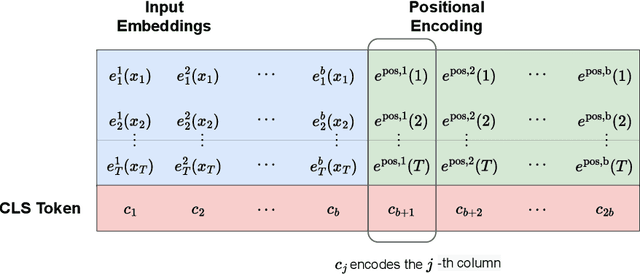
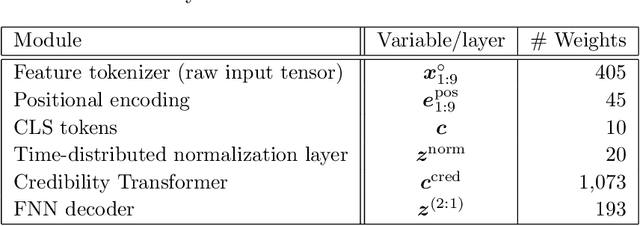
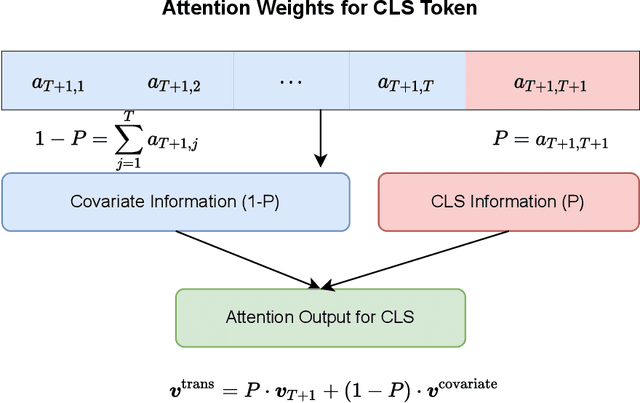

Abstract:Inspired by the large success of Transformers in Large Language Models, these architectures are increasingly applied to tabular data. This is achieved by embedding tabular data into low-dimensional Euclidean spaces resulting in similar structures as time-series data. We introduce a novel credibility mechanism to this Transformer architecture. This credibility mechanism is based on a special token that should be seen as an encoder that consists of a credibility weighted average of prior information and observation based information. We demonstrate that this novel credibility mechanism is very beneficial to stabilize training, and our Credibility Transformer leads to predictive models that are superior to state-of-the-art deep learning models.
Conditional expectation network for SHAP
Jul 20, 2023
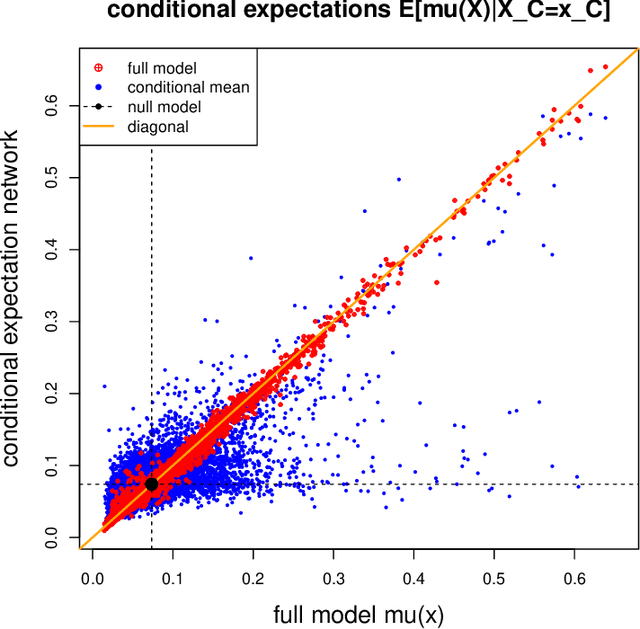
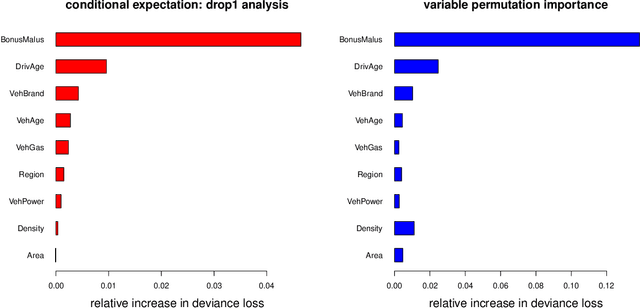
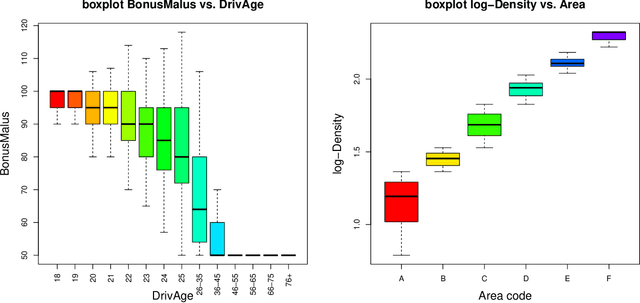
Abstract:A very popular model-agnostic technique for explaining predictive models is the SHapley Additive exPlanation (SHAP). The two most popular versions of SHAP are a conditional expectation version and an unconditional expectation version (the latter is also known as interventional SHAP). Except for tree-based methods, usually the unconditional version is used (for computational reasons). We provide a (surrogate) neural network approach which allows us to efficiently calculate the conditional version for both neural networks and other regression models, and which properly considers the dependence structure in the feature components. This proposal is also useful to provide drop1 and anova analyses in complex regression models which are similar to their generalized linear model (GLM) counterparts, and we provide a partial dependence plot (PDP) counterpart that considers the right dependence structure in the feature components.
Isotonic Recalibration under a Low Signal-to-Noise Ratio
Jan 06, 2023Abstract:Insurance pricing systems should fulfill the auto-calibration property to ensure that there is no systematic cross-financing between different price cohorts. Often, regression models are not auto-calibrated. We propose to apply isotonic recalibration to a given regression model to ensure auto-calibration. Our main result proves that under a low signal-to-noise ratio, this isotonic recalibration step leads to explainable pricing systems because the resulting isotonically recalibrated regression functions have a low complexity.
A Discussion of Discrimination and Fairness in Insurance Pricing
Sep 02, 2022Abstract:Indirect discrimination is an issue of major concern in algorithmic models. This is particularly the case in insurance pricing where protected policyholder characteristics are not allowed to be used for insurance pricing. Simply disregarding protected policyholder information is not an appropriate solution because this still allows for the possibility of inferring the protected characteristics from the non-protected ones. This leads to so-called proxy or indirect discrimination. Though proxy discrimination is qualitatively different from the group fairness concepts in machine learning, these group fairness concepts are proposed to 'smooth out' the impact of protected characteristics in the calculation of insurance prices. The purpose of this note is to share some thoughts about group fairness concepts in the light of insurance pricing and to discuss their implications. We present a statistical model that is free of proxy discrimination, thus, unproblematic from an insurance pricing point of view. However, we find that the canonical price in this statistical model does not satisfy any of the three most popular group fairness axioms. This seems puzzling and we welcome feedback on our example and on the usefulness of these group fairness axioms for non-discriminatory insurance pricing.
Model selection with Gini indices under auto-calibration
Aug 10, 2022
Abstract:The Gini index does not give a strictly consistent scoring rule in general. Therefore, maximizing the Gini index may lead to wrong decisions. The main issue is that the Gini index is a rank-based score that is not calibration-sensitive. We show that the Gini index allows for strictly consistent scoring if we restrict to the class of auto-calibrated regression models.
A multi-task network approach for calculating discrimination-free insurance prices
Jul 06, 2022
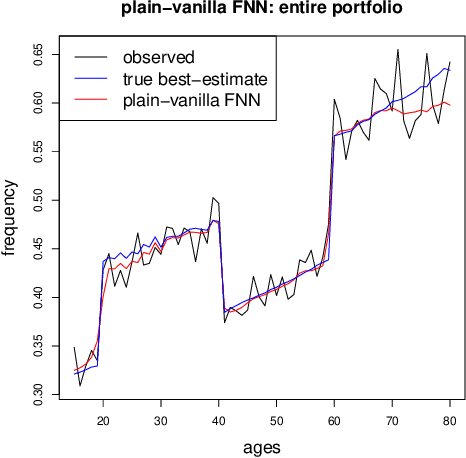

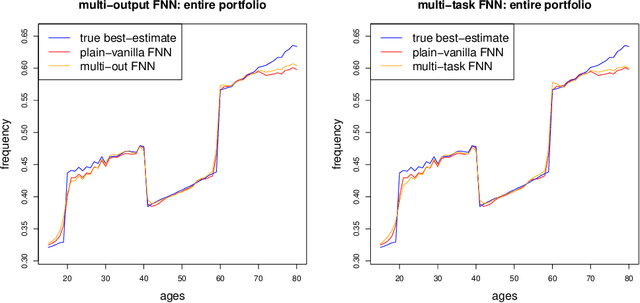
Abstract:In applications of predictive modeling, such as insurance pricing, indirect or proxy discrimination is an issue of major concern. Namely, there exists the possibility that protected policyholder characteristics are implicitly inferred from non-protected ones by predictive models, and are thus having an undesirable (or illegal) impact on prices. A technical solution to this problem relies on building a best-estimate model using all policyholder characteristics (including protected ones) and then averaging out the protected characteristics for calculating individual prices. However, such approaches require full knowledge of policyholders' protected characteristics, which may in itself be problematic. Here, we address this issue by using a multi-task neural network architecture for claim predictions, which can be trained using only partial information on protected characteristics, and it produces prices that are free from proxy discrimination. We demonstrate the use of the proposed model and we find that its predictive accuracy is comparable to a conventional feedforward neural network (on full information). However, this multi-task network has clearly superior performance in the case of partially missing policyholder information.
LocalGLMnet: interpretable deep learning for tabular data
Jul 23, 2021Abstract:Deep learning models have gained great popularity in statistical modeling because they lead to very competitive regression models, often outperforming classical statistical models such as generalized linear models. The disadvantage of deep learning models is that their solutions are difficult to interpret and explain, and variable selection is not easily possible because deep learning models solve feature engineering and variable selection internally in a nontransparent way. Inspired by the appealing structure of generalized linear models, we propose a new network architecture that shares similar features as generalized linear models, but provides superior predictive power benefiting from the art of representation learning. This new architecture allows for variable selection of tabular data and for interpretation of the calibrated deep learning model, in fact, our approach provides an additive decomposition in the spirit of Shapley values and integrated gradients.
 Add to Chrome
Add to Chrome Add to Firefox
Add to Firefox Add to Edge
Add to Edge